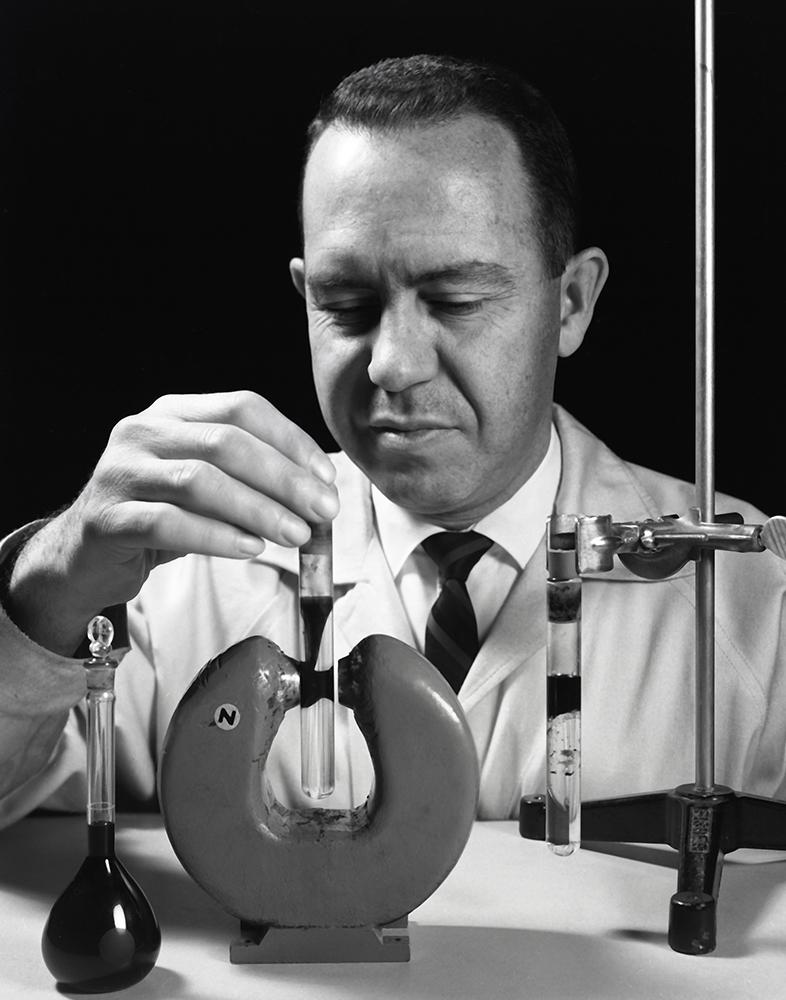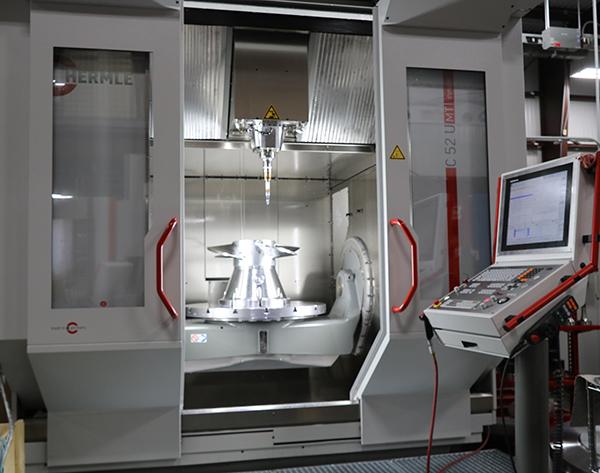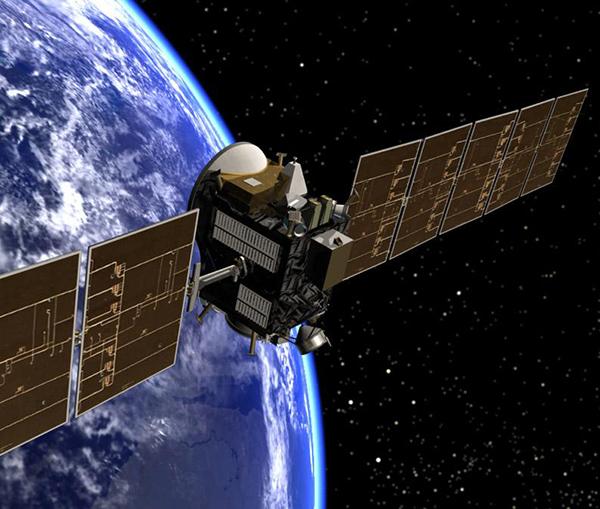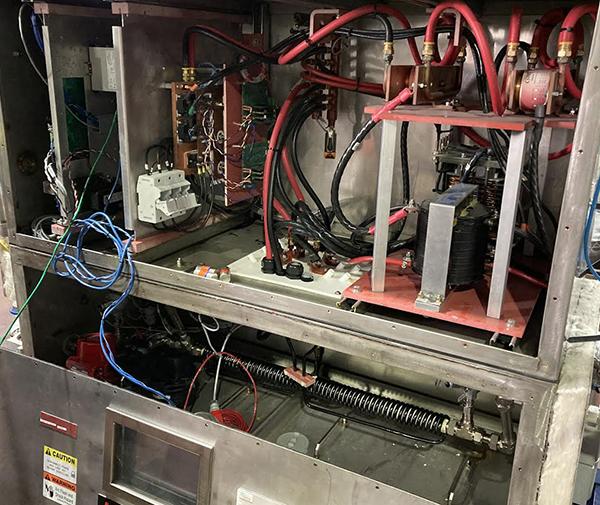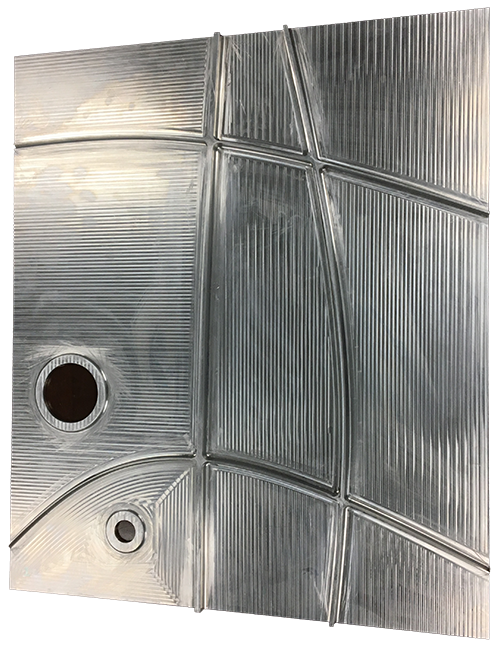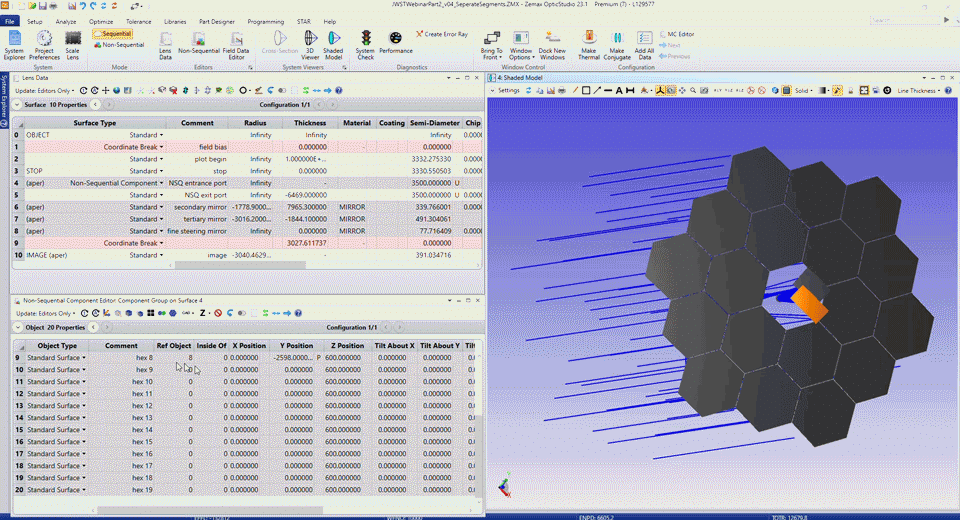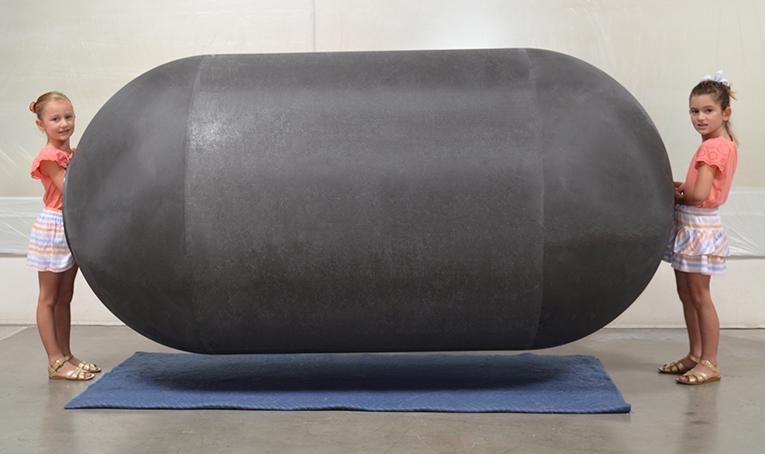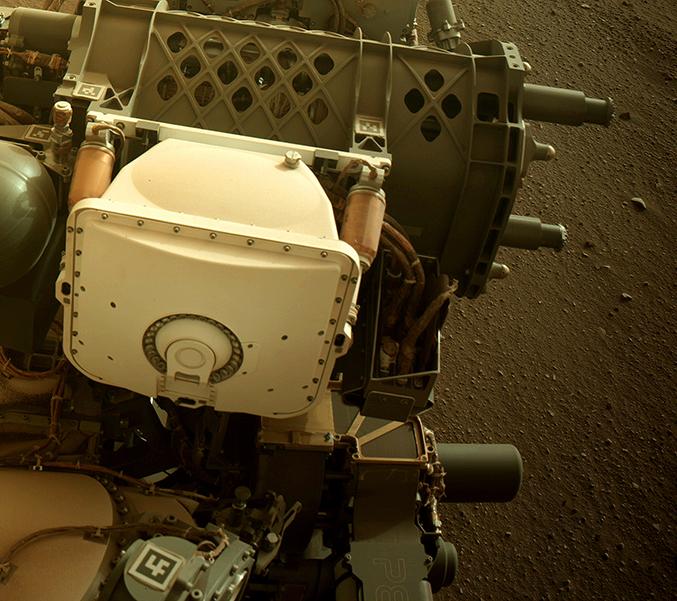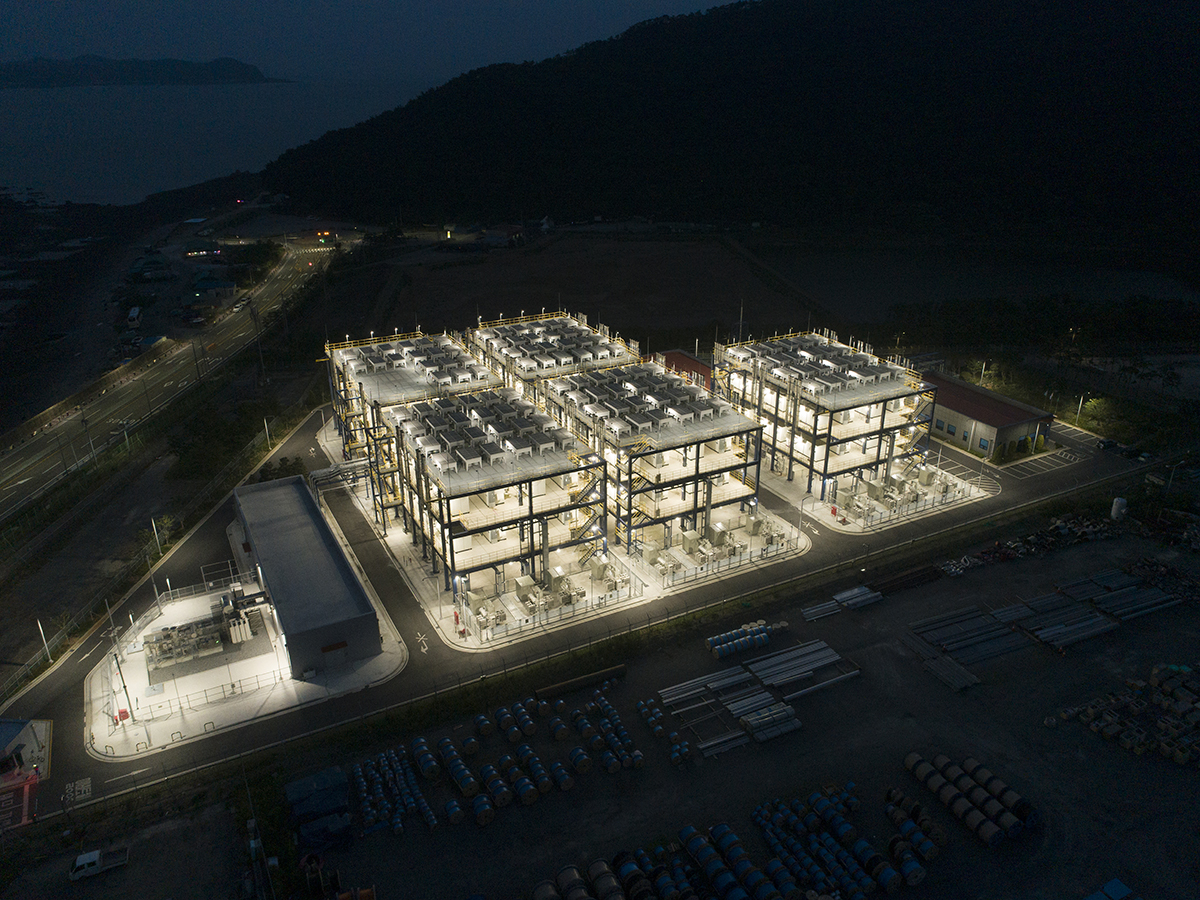
NASA’s Moon Shot Launched Commercial Fuel Cell Industry
Subheadline
Agency’s technology development prepared fuel cells for tomorrow’s renewable energy grids
When NASA started investing in fuel cell technology in the 1960s, the rest of the world was still content to be powered by fossil fuels. The simple imperative that drove NASA to explore new ways to generate and store energy was the crushing cost of launching mass into space: somewhere on the order of $10,000 per pound.
“NASA’s interest in fuel cells had nothing to do with alternative energy – we didn’t have any alternative,” said John Scott, NASA’s principal technologist for power and energy storage. “We had to make them work in order to fly the mission.”
NASA’s earliest crewed spacecraft relied on batteries for onboard power. Energy requirements for the long round trip to the Moon, however, would have necessitated more batteries than could feasibly be launched.
NASA’s Johnson Space Center in Houston, then called the Manned Spacecraft Center, stepped up to solve the problem. Engineers there considered fuel cells a potential solution because they had higher specific energy than batteries of the day, meaning they could, at least theoretically, provide more energy per pound over the course of a long mission. However, although the fuel cell concept had existed for more than a century, it had never been put to practical use.
NASA awarded funding to General Electric, Allis-Chalmers Energy, and an arm of Pratt & Whitney to develop fuel cell prototypes, and General Electric was contracted to deliver fuel cells for the Gemini spacecraft, flown in preparation for the Apollo Moon shot.
For Apollo’s fuel cells, NASA selected the Pratt & Whitney group, which became UTC Power, supplier of fuel cells for all the space shuttles and the seat of NASA fuel cell development for the next decades. With the space agency funding and shaping its fuel cell development, UTC eventually branched out into commercial fuel cells. After the Space Shuttle Program ended in 2011, the company changed hands a couple of times and is now known as HyAxiom Inc., a subsidiary of the South Korean Doosan Group.
Now HyAxiom, which still produces fuel cells in the same manufacturing plant in South Windsor, Connecticut, that produced them for NASA, is experiencing a renaissance as alternative energy is increasingly seen as the way of the future.
Different Fuel Cells, Same Basics
Unlike a battery, which only stores energy, a fuel cell generates electricity and heat when hydrogen and oxygen bond through an electrolyte. The by-product of this reaction is better than harmless – it’s water. This is the environmental advantage that makes fuel cells attractive today.
While the Gemini fuel cell was based on a proton-exchange membrane (PEM), the cells UTC Power produced for Apollo and the space shuttle were alkaline fuel cells. Alkaline cells are extremely mass-efficient but have been too fussy for commercial applications. Much of the underlying technology, though, is similar across different types of fuel cells.
Not only is the basic chemistry the same, but so are the fundamentals of “what might be called the ‘balance-of-plant’ – which manages the reactant flow into the fuel cell stack and gets product water and the heat out,” said Scott, noting that this hadn’t been considered in practical terms until NASA started pursuing the technology.
During the shuttle program, the space agency funded improvements that, for example, doubled space shuttle fuel cells’ life from 2,500 to 5,000 hours.
UTC Power released its first commercial product, a 200-kilowatt phosphoric acid fuel cell, in the mid-1990s. The company chose to commercialize cells with a phosphoric acid electrolyte in part because of their long lifespan, relatively common materials, and tolerance for impurities, said Sridhar Kanuri, HyAxiom’s chief technology officer. They can also run on natural gas or liquid petroleum gas, with a reformer at the front end of the cell converting the gas to hydrogen to feed what is still a hydrogen fuel cell. About 10 years later, the company put out 440-kilowatt versions with better efficiency and twice the lifespan, Kanuri said. This is still the product line HyAxiom manufactures today.
“The models they built for these products we use today had a lot of the electrochemistry understanding from the space program,” said Kanuri. “So the knowledge that they gained got transferred down to these other products.”
Production ramped up following the company’s acquisition by Doosan in 2014, partly because that transaction opened up the burgeoning Korean market, and HyAxiom now produces around 120 units per year.
Higher Efficiency, Falling Costs
In the United States, these fuel cells can now be found powering Whole Foods, Stop & Shop, and ShopRite locations. They also power a Coca-Cola bottling plant not far from HyAxiom’s facilities. The University of Connecticut and Rochester Institute of Technology use the company’s fuel cells, as do CBS Studios in California and the new World Trade Center in New York. San Diego Gas and Electric uses the cells in its electrical grid. “So these fuel cells are sprinkled all over the East and West coasts,” Kanuri said.
The Korean market, meanwhile, is primarily in utilities. “They put up tens of megawatts of these fuel cells at a given site,” said Kanuri. “In that configuration, we put anywhere between 10 and 125 fuel cell power plants in one location.”
The South Korean government offers incentives for fuel cell use, but the technology also has its own incentives, he said. While natural gas power generation on a typical electrical grid operates around 35% efficiency, HyAxiom fuel cells operate at 43% efficiency, so they already have an advantage, depending how close they’re located to end users. But the real trick is to make use of the heat they generate as a by-product. Korean utilities often include district heating grids, which can pull heat from fuel cells, bringing their efficiency close to 70%. And with clever engineering, even higher efficiency is possible. For instance, Kanuri said, the Mohegan Sun casino in Connecticut managed to extract close to 90% efficiency from its HyAxiom fuel cells by integrating them tightly into its heating systems, using the heat to warm water and even sidewalks.
With governments around the world starting to invest heavily in fuel cell technologies, and with companies competing to meet increased demand, Kanuri said, the price of fuel cells should plunge. “If we can take the latest technology into mass production, I think that is where the costs are going to come down dramatically,” he said. “We are producing fuel cells today in the hundreds of megawatts. If we can go to gigawatt-scale fuel cells, then you can beat out the grid with regard to cost.”
The U.S. government plans to use fuel cells to store energy from renewable sources. Electricity from solar panels or wind turbines would electrolyze water into clean hydrogen and oxygen, with the stored hydrogen then powering fuel cells when there’s no sun or wind.
HyAxiom has modified its technology to run on this clean hydrogen and has already installed 50 megawatts of these fuel cells at a petrochemical complex to generate power from hydrogen that otherwise would have been vented.
HyAxiom’s predecessor, UTC Power, also helped various companies develop PEM fuel cells for vehicles. UTC acquired PEM fuel cell patents decades ago from General Electric, which had cut its teeth making PEM cells for Gemini. UTC worked on fuel cell technology with Ford, Toyota, Hyundai, Nissan, and BMW. “They did development programs with us, where we transferred knowledge and made prototypes for them,” Kanuri said. Now at least three of those companies have fuel cell-powered vehicles in limited production.
Scott said there isn’t a commercial fuel cell today that doesn’t owe some debt to NASA’s early exploration of the technology. “All these companies trace their intellectual property heritage, their corporate heritage, even the generations of personnel to those three companies NASA funded back in the early ’60s,” he said.
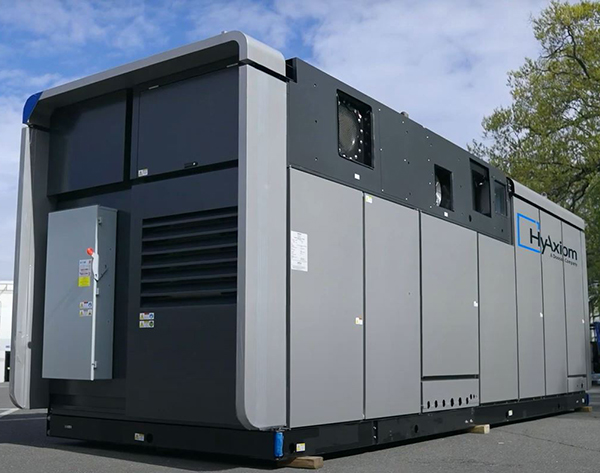
HyAxiom’s 440-kilowatt phosphoric acid fuel cell is now its flagship product, and it still builds on technical know-how developed under the Apollo and space shuttle programs. Credit: HyAxiom Inc.
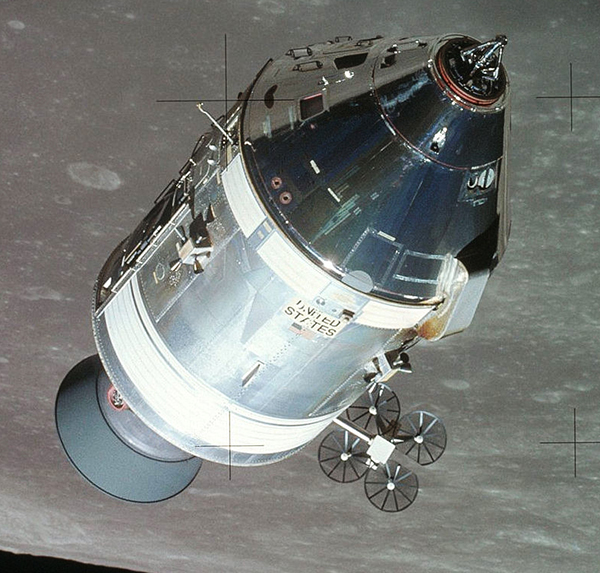
NASA funded development of the first practical fuel cells because they were necessary to cut weight from the Apollo spacecraft for Moon missions. Three fuel cells in the Apollo service module provided electricity for the capsule containing the astronauts. The division of Pratt & Whitney that made the fuel cells later became UTC Power, now a subsidiary of Doosan Group known as HyAxiom Inc. Credit: NASA
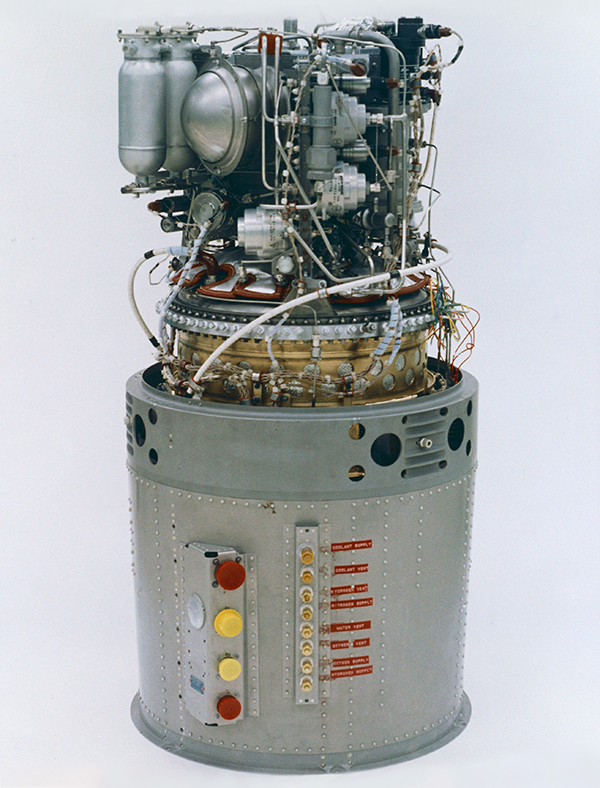
This is the fuel cell design Pratt & Whitney created for the Apollo missions. It was only the world’s second practical fuel cell design, the first having been invented by General Electric for NASA’s Gemini missions, which were preparation for the Apollo Moon shot. Credit: NASA
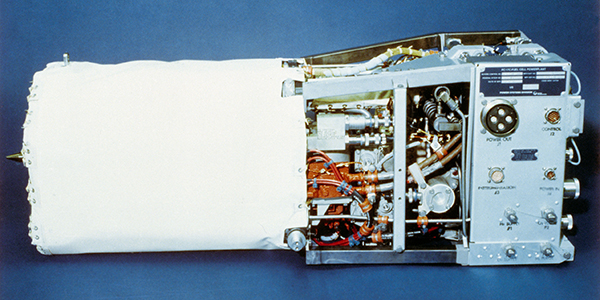
UTC Power, formerly a division of Pratt & Whitney and now known as HyAxiom, built the fuel cells for all of NASA’s space shuttles. By the time the shuttle program closed down in 2011, the company was also producing its second-generation commercial fuel cells. Credit: NASA
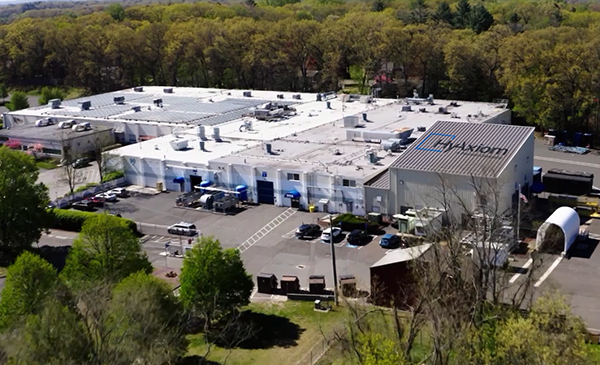
Today HyAxiom builds fuel cells in the same production facility in South Windsor, Connecticut, where its predecessors built fuel cells for NASA. Credit: HyAxiom Inc.

HyAxiom, a subsidiary of the Korean Doosan Group, supplied 114 fuel cells for the Daesan Hydrogen Fuel Cell Power Plant in Seosan, South Korea. The world’s largest by-product fuel cell power plant, it runs entirely on waste hydrogen from petrochemical facilities to produce enough energy to power 160,000 homes in the area. Credit: HyAxiom Inc.






